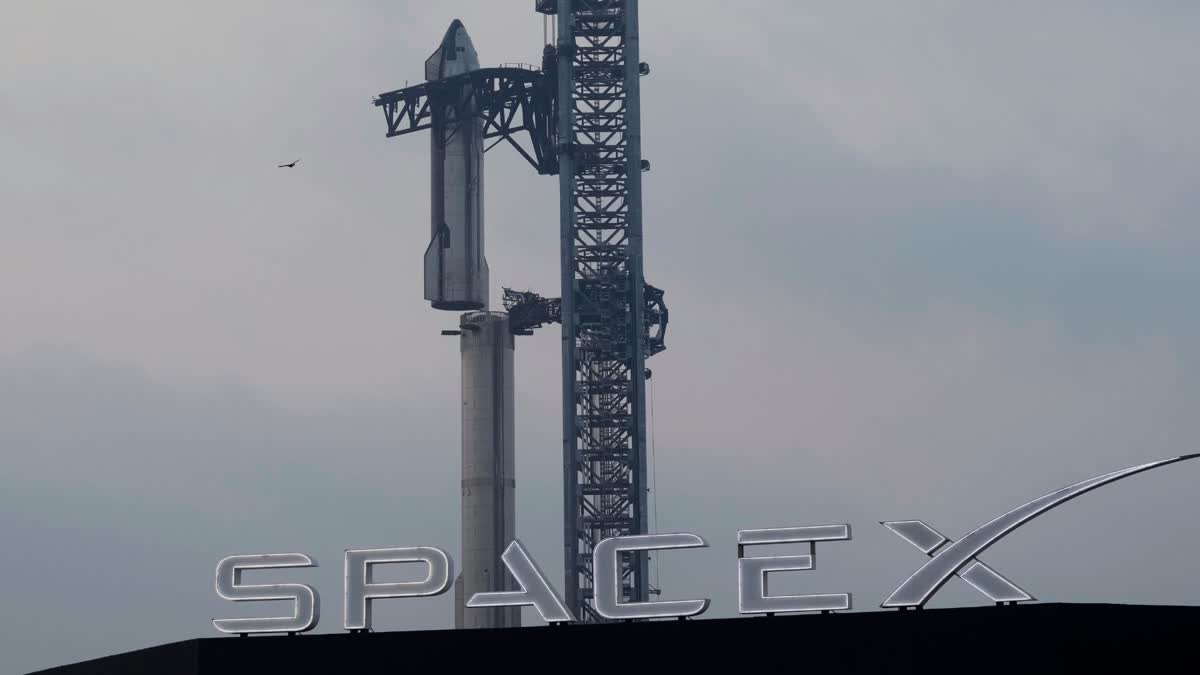Houston : SpaceX's mega Starship rocket completed its first full test flight Thursday, returning to Earth without exploding after blasting off from Texas. The previous three test flights ended in explosions of the rocket and the spacecraft. This time, both managed to splash down in a controlled fashion.
The world's largest and most powerful rocket almost 400 feet (121 metres) tall was empty as it soared above the Gulf of Mexico and headed east on a flight to the Indian Ocean.
Minutes after Thursday morning's liftoff, the first-stage booster separated from the spacecraft and splashed into the gulf precisely as planned, after firing its engines.
An hour later, live views showed parts of the spacecraft breaking away during the intense heat of reentry, but it remained intact enough to transmit data all the way to its targeted splashdown site in the Indian Ocean.
SpaceX's mega Starship rocket is meant for the spaceship that NASA and Elon Musk are counting on to get humanity to the moon and Mars. The spacecraft on top was aiming for a half-lap around the planet with a splashdown in the Indian Ocean, once it ditched the first-stage booster in the gulf.
This time, SpaceX avoided explosions by controlling the descents. SpaceX came close in March, but lost contact with the spacecraft as it careened out of space and blew up short of its goal. The booster also ruptured in flight, a quarter-mile above the gulf.
Last year's two test flights ended in explosions shortly after blasting off from the southern tip of Texas near the Mexican border. The first one cratered the pad at Boca Chica Beach and hurled debris for thousands of feet (metres).
SpaceX upgraded the software and made some rocket-flyback changes to improve the odds. The Federal Aviation Administration signed off Tuesday on this fourth demo, saying all safety requirements had been met.
Starship is designed to be fully reusable. That's why SpaceX wants to control the booster's entry into the gulf and the spacecraft's descent into the Indian Ocean it's intended as practice for planned future landings. Nothing will be recovered from Thursday's flight.
NASA has ordered a pair of Starships for two moon-landing missions by astronauts, on tap for later this decade. Each moon crew will rely on NASA's own rocket and capsule to leave Earth, but meet up with Starship in lunar orbit for the ride down to the surface.
SpaceX already is selling tourist trips around the moon. The first private lunar customer, a Japanese tycoon, pulled out of the trip with his entourage last week, citing the oft-delayed schedule.
SpaceX's founder and CEO has grander plans: Musk envisions fleets of Starships launching people and the infrastructure necessary to build a city on Mars.



